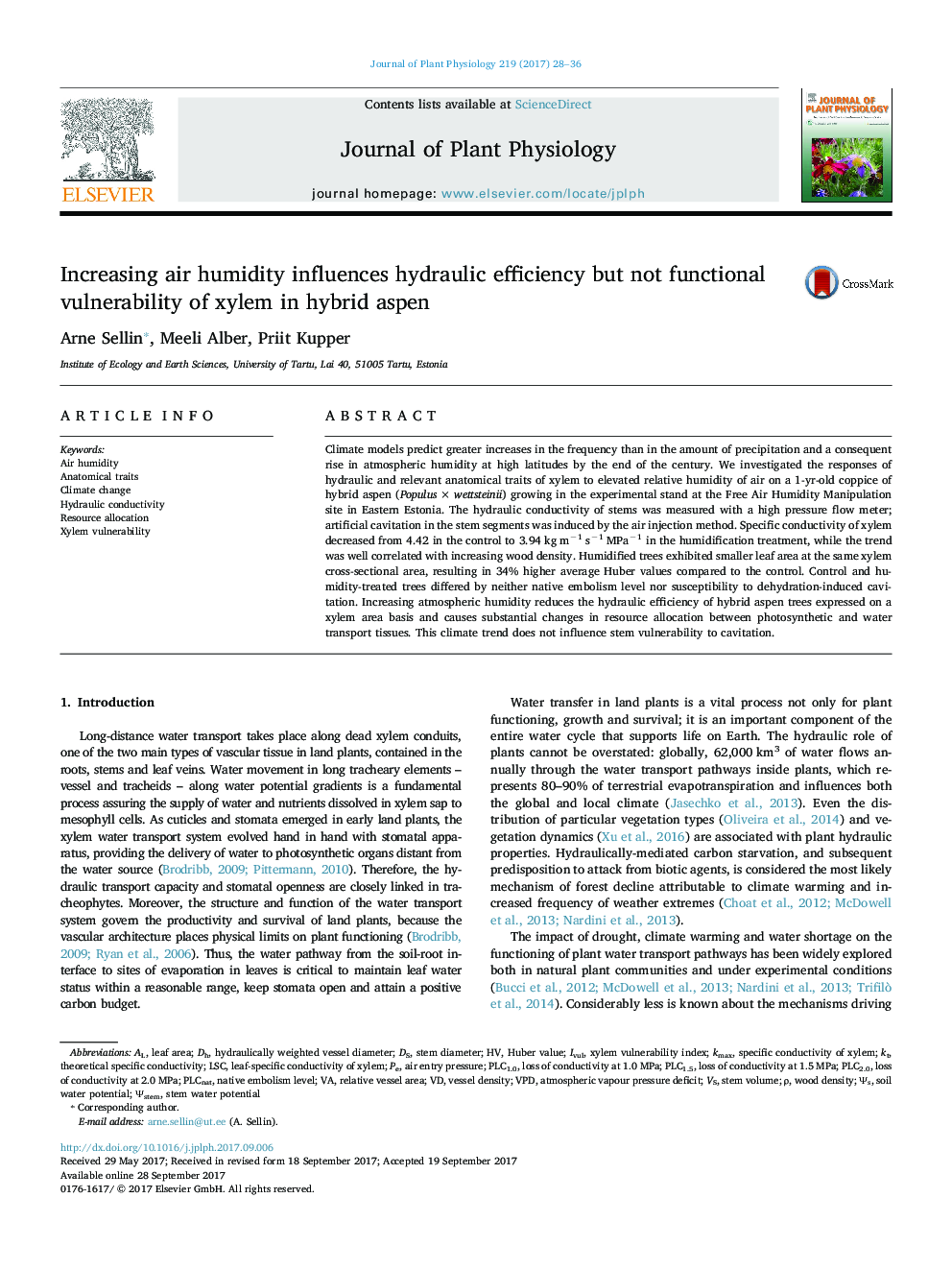| Article ID | Journal | Published Year | Pages | File Type |
|---|---|---|---|---|
| 5517948 | Journal of Plant Physiology | 2017 | 9 Pages |
Climate models predict greater increases in the frequency than in the amount of precipitation and a consequent rise in atmospheric humidity at high latitudes by the end of the century. We investigated the responses of hydraulic and relevant anatomical traits of xylem to elevated relative humidity of air on a 1-yr-old coppice of hybrid aspen (Populus Ã wettsteinii) growing in the experimental stand at the Free Air Humidity Manipulation site in Eastern Estonia. The hydraulic conductivity of stems was measured with a high pressure flow meter; artificial cavitation in the stem segments was induced by the air injection method. Specific conductivity of xylem decreased from 4.42 in the control to 3.94 kg mâ1 sâ1 MPaâ1 in the humidification treatment, while the trend was well correlated with increasing wood density. Humidified trees exhibited smaller leaf area at the same xylem cross-sectional area, resulting in 34% higher average Huber values compared to the control. Control and humidity-treated trees differed by neither native embolism level nor susceptibility to dehydration-induced cavitation. Increasing atmospheric humidity reduces the hydraulic efficiency of hybrid aspen trees expressed on a xylem area basis and causes substantial changes in resource allocation between photosynthetic and water transport tissues. This climate trend does not influence stem vulnerability to cavitation.
